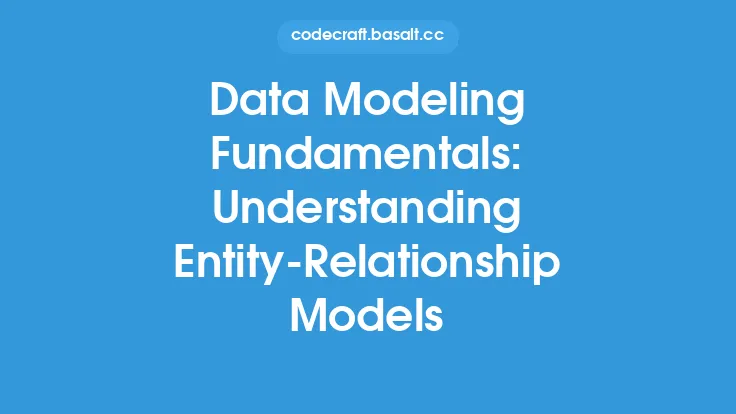When designing an API, it's essential to understand the fundamentals that make up a well-structured and maintainable interface. API design is a critical aspect of software architecture, as it determines how different components of a system interact with each other. A good API design should be intuitive, easy to use, and scalable, allowing developers to build robust and efficient applications. In this article, we'll delve into the basics of API design, exploring the key concepts, principles, and best practices that underpin a successful API.
Introduction to API Design Principles
API design principles are the foundation upon which a well-designed API is built. These principles guide the development of an API, ensuring that it meets the needs of its users and is maintainable over time. Some of the key principles of API design include simplicity, consistency, and flexibility. Simplicity refers to the ease of use and understanding of the API, while consistency ensures that the API behaves predictably and follows established patterns. Flexibility, on the other hand, allows the API to adapt to changing requirements and use cases. By following these principles, developers can create APIs that are easy to use, maintain, and extend.
Understanding API Endpoints and Resources
API endpoints and resources are the building blocks of an API. Endpoints refer to the specific URLs or URIs that an API exposes, while resources represent the data or functionality that an endpoint provides access to. A well-designed API should have a clear and consistent naming convention for its endpoints and resources, making it easy for developers to understand the purpose and behavior of each endpoint. Resources can be thought of as nouns, representing entities such as users, products, or orders, while endpoints are the verbs that act upon those resources, such as create, read, update, or delete.
HTTP Methods and Status Codes
HTTP methods and status codes are essential components of API design. HTTP methods, such as GET, POST, PUT, and DELETE, define the actions that can be performed on a resource, while status codes provide feedback on the outcome of a request. A well-designed API should use HTTP methods and status codes consistently and correctly, following established conventions and best practices. For example, a GET request should always be idempotent, meaning that it can be safely repeated without causing unintended side effects, while a POST request should create a new resource. Status codes, such as 200 OK, 404 Not Found, or 500 Internal Server Error, provide valuable information about the outcome of a request, allowing developers to handle errors and exceptions effectively.
Request and Response Bodies
Request and response bodies are used to exchange data between the client and server. A well-designed API should define clear and consistent formats for request and response bodies, using standards such as JSON or XML. The request body should contain the data required to perform the requested action, while the response body should contain the resulting data or error information. API designers should also consider factors such as data validation, serialization, and deserialization when designing request and response bodies, ensuring that data is handled correctly and efficiently.
API Design Patterns and Architectural Styles
API design patterns and architectural styles provide a framework for designing and building APIs. Patterns such as the Repository pattern or the Service-Oriented Architecture (SOA) pattern can help guide the design of an API, ensuring that it is modular, scalable, and maintainable. Architectural styles, such as REST (Representational State of Resource) or GraphQL, define the overall structure and behavior of an API, influencing the design of endpoints, resources, and request and response bodies. By understanding and applying these patterns and styles, developers can create APIs that are well-structured, efficient, and easy to use.
Data Modeling and Schema Design
Data modeling and schema design are critical aspects of API design. A well-designed data model should accurately represent the underlying data and relationships, while a schema defines the structure and constraints of the data. API designers should consider factors such as data types, relationships, and validation rules when designing a data model and schema, ensuring that the API can handle complex data scenarios and edge cases. A good data model and schema should also be flexible and adaptable, allowing for changes and extensions over time.
Conclusion
In conclusion, API design fundamentals are essential for building well-structured, maintainable, and scalable APIs. By understanding the principles, concepts, and best practices outlined in this article, developers can create APIs that are easy to use, efficient, and adaptable to changing requirements. Whether designing a new API or refining an existing one, it's crucial to consider factors such as simplicity, consistency, and flexibility, as well as the technical details of endpoints, resources, HTTP methods, and data modeling. By following these fundamentals and staying informed about the latest developments and trends in API design, developers can build APIs that meet the needs of their users and drive business success.





